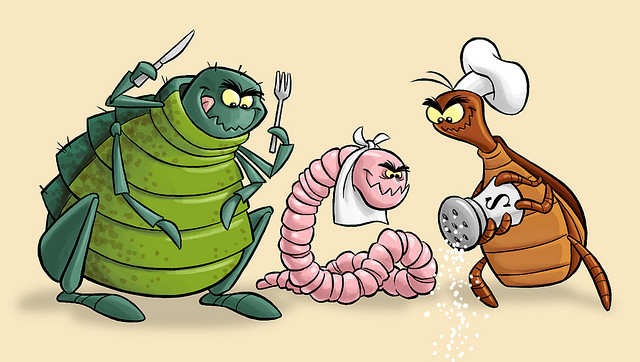A founding member of Companion Animal Parasite Council, Michael Dryden (who has a doctorate in veterinary parasitology), has researched nearly every major flea and tick product on the market so we don’t have to. With over 2,200 kinds of fleas around your pet, protecting them from the deadly ones is a very important task.
Check out the most common questions and the well researched answers that go along with this extensive flea and tick study for consumers:
Q: How did my dog get these fleas and ticks?
A: The way animals get fleas is some other flea-infested animal – a stray dog or stray cat, or some other neighbors’ dog or cat, or urban wildlife, mainly opossums and raccoons – went through your neighborhood, your yard, and the female flea is laying eggs and the eggs are basically rained off into your environment. We call them a living salt shaker. And then those eggs developed into adults and those fleas jumped onto your pet. That’s how it happened.
Q: Can fleas and ticks cause my dog to get sick? What kinds of illnesses can she get from them?
A: Probably the most common thing is, when these fleas are feeding, they’re injecting saliva into the skin. These salivary proteins are often allergenic and animals end up with allergy. The most common skin disease of dogs and cats is what’s called flea allergy dermatitis, where they bite and scratch and lose their hair. It can take only a few fleas for this allergy to become a problem. If you have a lot of fleas, since they’re blood-sucking insects, especially if you have puppies, pets can become anemic and even die with heavy infestations. Fleas also commonly transmit tapeworms to our pets, at least one species.
With ticks, there are a dozen to 15 or more tick-transmitted diseases that our pets get from ticks. There’s Lyme disease, Rocky Mountain spotted fever, tularemia, ehrlichiosis, and more. Many of these diseases can kill pets.
Q: Are fleas and ticks worse in some areas? Where?
A: Ticks and fleas can be worse from one area to another and can vary seasonally and from year to year. There’s one particular flea species that we find on dogs and cats in North America that predominates … called Ctenocephalides felis, or the cat flea. That flea is very susceptible to drying. So that’s why there are more fleas in Tampa than in Kansas City, and more fleas in Kansas City than Denver. Once you get into the Rocky Mountain states, for example, or even the Western areas of the plains states, fleas on dogs and cats are not that much of a problem because it’s just too dry. The Gulf Coast region of North America and the Southeast region are the flea capital. As you move inland, however, depending on the rainfall in a given year, it can be OK or get very horrid at times.
Q: There are also reports that the EPA is looking into an increase in adverse reactions from topically applied flea control products, the ones we usually put on our dogs and cats between their shoulder blades. So are these unsafe?
A: I generally believe, based on my experience and our field studies, that the products we get from our veterinarians are generally very safe and generally do a very, very good job. But you’ve got to understand that millions of doses are used each year. With that many doses, things happen. Do rare reactions occur? Absolutely. We know they do. But generally with a veterinary-recommended or prescribed flea or tick product, if they are used according to label directions, they are extremely safe in my experience.
Q: What are the best ways to control fleas and ticks?
A: Besides the flea products we’ve discussed, if you have a cat, don’t ever let it go outside. Try to keep your home as dry as possible. I would recommend not having any carpet because carpet is a flea’s best friend. Keep the brush and weeds in your yard to an absolute minimum.
Q: How can I control fleas and ticks in my yard?
A: Cut the tall grass, trim back the bushes and shrubs, then rake up all the leaf litter under the bushes. Leave it just bare ground. There are some lawn and garden insecticides that are approved by the EPA to be applied under shrubs, under bushes, in crawl spaces, along fence lines, to control fleas and ticks outside. The big issue I see is people tend to go out and start spraying their grass. That’s not effective and it’s certainly not good for the environment. Fleas and ticks are really sunlight and humidity sensitive. Most situations where we find them are under shrubs, under bushes, under porches, in shaded, protected habitats. So we should only be applying those compounds in a limited fashion under those locations. Then we’re going to let it dry on the foliage for three to four hours before we allow our pets and our children back out there.
This should get you started on understanding how and why flea and tick prevention are so important.
Do you have any other tips or advice to share on this topic?
Image Source: Cedric Hohnstadt on Flickr





Leave a Reply